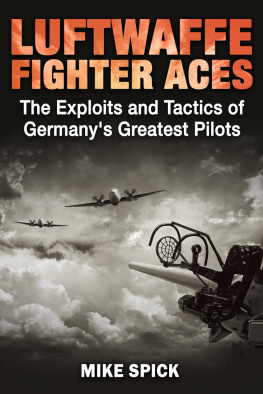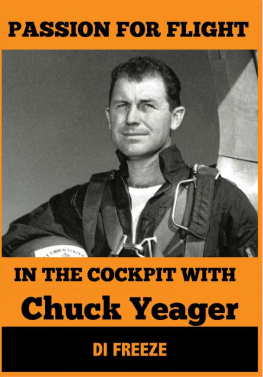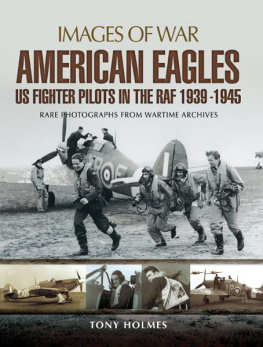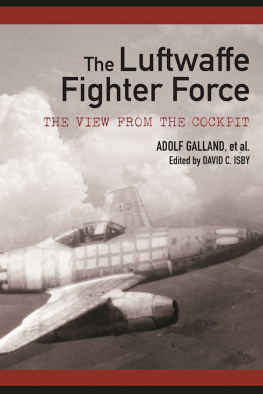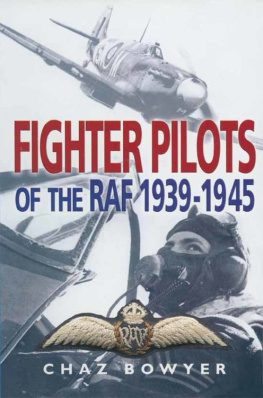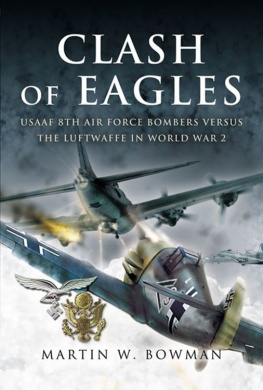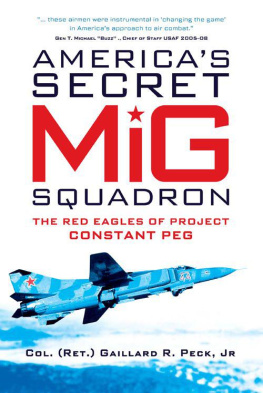All the Fine
Young Eagles
other books by david l. bashow
Sting of the Hornet
Starfighter
No Prouder Place: Canadians and the Bomber Command Experience 19391945
Knights of the Air
None but the Brave
Soldiers Blue
All the Fine
Young Eagles
in the cockpit with canadas
second world war fighter pilots
updated and expanded second edition
David L. Bashow
foreword by air vice-marshal
j.e. johnnie johnson
Douglas & McIntyre
Copyright 2016 David L. Bashow
1 2 3 4 520 19 18 17 16
All rights reserved. No part of this publication may be reproduced, stored in a retrieval system or transmitted, in any form or by any means, without prior permission of the publisher or, in the case of photocopying or other reprographic copying, a licence from Access Copyright, .
Douglas and McIntyre (2013) Ltd.
p.o. Box 219, Madeira Park, bc , v0n 2h0
www.douglas-mcintyre.com
Copyedited by Merrie-Ellen Wilcox
Indexed by Tori Hannesson
Cover design by Anna Comfort OKeeffe
Text design by Mary White
Printed and bound in Canada
Douglas and McIntyre (2013) acknowledges the support of the Canada Council for the Arts, which last year invested $153 million to bring the arts to Canadians throughout the country. We also gratefully acknowledge financial support from the Government of Canada through the Canada Book Fund and from the Province of British Columbia through the bc Arts Council and the Book Publishing Tax Credit.
Library and Archives Canada Cataloguing in Publication
Bashow, David L., 1946, author
All the fine young eagles : in the cockpit with Canadas Second World War fighter pilots / David L. Bashow ; foreword by Air Vice-Marshal J.E. Johnnie Johnson. Updated and expanded second edition.
Includes bibliographical references and index.
Issued in print and electronic formats.
isbn 978-1-77162-135-9 (paperback). isbn 978-1-77162-136-6 (html)
1. Canada. Royal Canadian Air ForceHistoryWorld War, 19391945. 2. Great Britain. Royal Air ForceHistoryWorld War, 19391945. 3. World War, 19391945Aerial operations,Canadian. 4. World War, 19391945Personal narratives, Canadian. 5. Fighter pilotsCanadaBiography. I. Title.
D792.C2B37 2016 940.54'4971 C2016-903801-7 C2016-903802-5
Nor law, nor duty bade me fight,
Nor public men, nor cheering crowds,
A lonely impulse of delight.
Drove to this tumult in the clouds.
W.B. Yeats
Foreword
air vice-marshal j.e. johnnie johnson
cb, cbe, dso (2 bars), dfc (1 bar)
During the early years of the Second World War, I knew several distinguished Canadian fighter pilotsStan Turner, Dal Russel, Gordie McGregor, and Ernie McNab, all of Battle of Britain famebut my real association with the Canadians began in the spring of 1943 when I was Wing Commander Flying of the Kenley Wing (403 and 416 Squadrons) and ended two years later when I left 127 Wing (403, 416, and 443 Squadrons). We were fortunate to fly the elegant Spitfire ix , whose only disadvantage was its lack of range; as a short-range fighter it had no equal.
We saw a fair amount of action, and I think the highlight of 1943 was escorting the B-17s of The Mighty Eighth as they fought their way deep into Germany. Before the arrival of the long-range Mustangthe most significant fighter of those daysthe Americans took some hard knocks; but they pressed on and eventually won a great victory.
In the spring of 1944, I was appointed Wing Commander Flying of 144 Wing (441, 442, and 443 Squadrons), and on June 15, 1944, we made history when we were the first fighter outfit to move into Normandy at St-Croix-sur-Mer. From the beachhead our fighter-bombersespecially the Typhoons, flown by the bravest of the bravestunned and paralysed the German armies.
After the great killing ground of Falaise, we began the long trek across northwest Europe, only to be halted by the Rhine and Montgomerys failure at Arnhem. By the following spring it was all over.
During these peregrinations I came to know many Canadian fighter pilots, and I knew the squadron commanders best of all because I saw and briefed them every day. The outstanding squadron commanders were Danny Browne, Hugh Godefroy, George Hill, Wally Conrad, George Keefer, Buck McNair, Dal Russel, and the greatest marksman of those days, Wally McLeod. They were good and trusted leaders who were always there in the tightest of corners. It was a privilege to be associated with such fighting Canadians, and here in Colonel David Bashows outstanding and carefully researched narrative we meet again that gallant company:
He that outlives this day, and comes safe home,
Will stand a tip-toe when this day is namd.
Shakespeare, King Henry V
Preface
During the six years of the Second World War, Canadian fighter pilots flew and fought with great distinction in every theatre to which Commonwealth fighter forces were deployed. All the Fine Young Eagles attempts to capture the spirit and magnitude of the Canadian contribution, which began in Europes Low Countries in 1940 and ended among the Japanese Home Islands in 1945.
A few words on the content and scope of the book are warranted. Since the Royal Canadian Air Forces aerial fighter contribution predominated over northwest Europe, a lot of my material relates to that theatre. A great many Canadian fighter pilots also served in Royal Air Force units, however, and deployed to all active theatres of British interest. Therefore, a substantial amount of text relates to operations in North Africa, Sicily, Italy, and the Far East. Home Defence fighter operations, including the Aleutians campaign, also form a significant part of the overall story.
Initially, I had intended to cover only day fighter, night fighter, and intruder operations, but I soon discovered that to provide a true representation of fighter actions, I would also need to properly recognize the army cooperation/fighter reconnaissance and fighter-bomber disciplines. Although their respective missions did not primarily involve air combat, circumstances frequently demanded it, particularly during the last year of the European war.
A brief explanation of particular language in the book is also warranted. Some of the former pilots who have contributed personal accounts occasionally described or referred to their enemies in terms that by todays standards might be considered somewhat derogatory, although they were indeed household words during the war. I have felt from the outset that it was not part of my mandate to pass judgement on or tamper in any way with the veterans contributions or to impose an unwarranted layer of political correctness upon their recollections, and thus, their stories appear just as they were presented to me.


